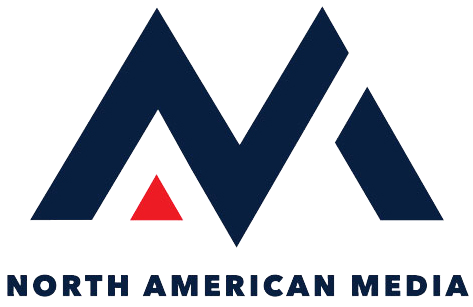Many companies reject print media advertising, believing the digital age has given way to more efficient forms of marketing. But comparisons between print media and electronic media have shown that print media provides many incredible advantages. Magazines, newspapers, leaflets, and catalogs are more effective at targeting customers and making a lasting impression. Here are some of the advantages of printed media over electronic media.
Advantages of Print Media vs. Electronic Media
Can electronic media replace print media? If you ask brands like Ikea or Williams-Sonoma, the answer would be “no.” These companies derive a huge part of their success from their catalogs and print media. Flashy magazines with vibrant photographs will always be popular among consumers and they’re very effective at grabbing readers’ attention. Additionally, print media is generally an easy and affordable medium to advertise with and effectively spreads awareness within a specific geographical area. You can target your demographic more easily with print media by doing research and delivering your catalogs right to your prospective customers’ mailboxes. Print media allows for easy budgeting and expense management as well.
As for electronic media, although it has a much wider reach and allows for greater flexibility, its results still do not compare to the quality of customer relationships you can gain from using a print media strategy. Electronic media does allow businesses and retailers to use pictures, animations, and even 3D imaging to market their products or services, but it comes at a cost. It is actually much more affordable to set up a print marketing campaign. And the profit you gain through targeting the consumers most likely to buy your products outweighs the investment.
Benefits of Print Media
Higher Frequency of Viewing
One of the best benefits of print media is that it has a higher frequency opportunity of viewing than online ads. Since the newspaper or magazine may sit on a table or rack at a business or home, repeated exposures are allowed. Flyers, brochures, and other physical pieces are often reviewed multiple times and shared with other prospects. Unlike digital messaging, print media does not disappear after generating an impression. It piles up, creates clutter, and is thereby reviewed once more, even before recycling or discarding. Because of this long shelf life, you can benefit from having your ad seen by more people, more often.
Control over Appearance
Another newspaper advertising advantage is that you can control the way it looks. You have complete power over the colors you use and the characteristics of the paper. Every aspect of typography, color choices, graphics, and design allows you to create a presentation that meets the expectations of your prospects. Other types of media provide less control over these aspects. Digital media can be subject to operating systems and browser configurations, and television advertising only appears and sounds as good as the technology it is presented upon.
Holds Readers’ Attention
If you’ve ever tried to read a lengthy article online, you’ll understand how much the digital age has nearly killed the human attention span. People surf the Internet with multiple tabs open while texting their friends, and half-listening to the television in the background. With all this constant stimulation, it’s almost impossible to focus on a single thing for a very long. That’s why print media is the better option for your advertising. Print readers cannot multitask while they are reading your magazine or newspaper. This means they can focus on what they see and be more receptive to the ads within the publication. This benefit of newspaper advertising is one of the reasons why so many big brands still post ads in print.
Encourages Action
When people use the Internet, they try to avoid ads at all costs. It’s easy to click the “X” button within seconds of an ad popping up on the screen—it’s almost instantaneous. Online users hate ads. There are even apps designed to block ads from showing up on web pages. This isn’t the case with print media. Most print readers are motivated to take some form of action after viewing a magazine or newspaper ad. For example, ads for a local grocery chain product sale encourage customers to visit the store and buy the product right away, instead of waiting until they actually need it. The idea that the item, at such a good price, could go out of stock sends signals to the reader that they need to take immediate or soon action, so they don’t miss out.
Flexibility
Print ads are amazing at allowing you to target your audience. You’re in full control of exactly what section of the newspaper or magazine you place your ad in, and you can do this based on information about where your audience is most likely to read. You can run your ad in specialty magazines related to your topic or in general papers that deliver to your geographic locations. You can also run your ad on a specific day of the week. You can tailor your campaigns to suit your budget by changing the size and color of your ad. Even more, you will be working with a human being when you buy your ad space, so you won’t be at the mercy of an online algorithm that decides where your ads are seen. Print media provides you with much more customization than digital ads.
More Accurate Targeting
It’s hard to know exactly whether print media or digital media are better at reaching a targeted audience. Print allows you to choose a publication that your target audience is most likely to read. This can be a trade magazine that caters to a specific industry or a local newspaper. This is why many say print is better at reaching local audiences. Print media allows you to advertise directly to your audience, by publishing your ad in magazines that rely on subscriptions. For example, if you sell gardening tools, you can post your ad in gardening and home magazines. Since digital ads can get lost on the Internet and are subject to algorithms, you can benefit from choosing a print media marketing solution. You have the time to better understand your target audience and specify your ad to appeal to them.
Credibility Increases Reader Loyalty
Print publications are better able to increase reader loyalty because they are credible. Many people subscribe to magazines and newspapers because they understand and believe that the information provided to them is credible and accurate. Publishing an article in print takes a lot more effort than publishing something online. This is because you only have one chance to get every word and image right before it gets published. With online ads, you can go back in to change or tweak your ad and send it back out. Since there is this pressure on accuracy and credibility and print media, readers are more likely to trust this platform. This works to your advantage by generating leads and sales much easier. As an added benefit, this trustworthiness leads to better reader loyalty.
Sensory Experience
Some people simply enjoy the act of flipping through magazine pages, creating “dog ears” on the pages they want to turn back to, and carrying the information everywhere they go. When people wait at a doctor’s office, it’s second nature to pick up the magazine or newspaper on the front table and start reading. When people take a flight on an airplane, they often bring reading material to enjoy as they relax and try to get their minds off how high up they are. This sensory experience of touching the page of the ad is on improves the impact it has on consumers.
Important Types of Print Media
There are three main important types of print media: newspapers and articles, magazines and catalogs, and books. Newspapers and articles are delivered in a frequent and regular manner, and they can be presented attractively to create interest in the reader. This form also provides accurate and authentic information about current events locally and worldwide, related to various human-interest topics like health or entertainment.
Magazines and catalogs go deeper into a particular topic. They can feature stories, interviews, research, or analysis to provide the reader with more details about a specific topic. Unlike newspapers, which provide information on several topics and categories, magazines focus all their content on something specific and provide in-depth research and information about it. Some topic examples include fashion, technology, gaming, interior design, and fitness.
Thirdly, print media can come in the form of books. These can be considered a form of cultural heritage, encompassing scientific reports, history, and literature. Whether it comes in the form of textbooks, adult literature, or storybooks, this form of print media is a great way to target people who still enjoy taking their time and going through an entire book about a topic. Biographies, history, and self-help are some of the categories of this type of print media.
Get Print Media Marketing Support at North American Media
This brief comparison clearly shows why many businesses are still using print media marketing to reach their customers and sell more products. The tangible aspects of the medium will always be attractive to customers. Plus the real estate in a catalog allows you to share more about your brand while keeping the customers’ attention with pictures and informative paragraphs. You can lead your customers to your website or online store as well, which allows you to reap the benefits of a solid omnichannel strategy. If you want to experience the advantages of a successful print media strategy, you may want to seek direction from the experts. North American Media can help you understand the pros and cons of print media vs. electronic media and this opportunity to grow your customer base. We can provide all the information, advice, and assistance you need to get your print catalog marketing campaign up and running. Our services also include print media, direct mail marketing, list brokerage, data solutions, list fulfillment, and list management. For more information about how we can help grow your business, contact us at +1 475-256-0303.
- Crafting an Effective Follow-Up Strategy After Your Direct Mail Campaign - July 22, 2024
- Boost Website Engagement with Interactive Direct Mail Elements - June 14, 2024
- How to Write Powerful Headlines for Direct Mail Campaigns - May 17, 2024

